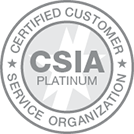Non-profit associations contribute to the health of communities all over the world
When it comes to public health, non-profit associations play a central role. From specialists in niche categories of healthcare to product safety experts to environmental researchers, countless members of groups with a vested interest in promoting and forwarding health-related initiatives are represented by associations designed to provide education, support research, and foster relationships that allow professionals to build on one another’s knowledge and work. Organizations such as these don’t simply offer professional support to their members or their fields. Instead, they have a ripple effect; by supporting the progress of their own areas of expertise, they support progress on a global scale.
The American Neurological Association (ANA), the Controlled Release Society (CRS), and the National Air Duct Cleaners Association (NADCA) are three such organizations. Each one impacts global health in its own unique way, but all are founded on the ideal of improving public health all over the world.
The Academic Researchers
At the American Neurological Association, the members are physician scientists who both see patients and conduct groundbreaking neurological research. According to The Lancet, neurological disorders are the leading cause of disability and the second leading cause of death worldwide. “ANA members are instrumental in providing interventions to decrease the burden of neurological disorders through partnering with academic neurologists and neuroscientists globally,” said Nadine Goldberg, PhD, MS, Executive Director of ANA.
Neurological disorders affect individuals around the world, and they have an impact on those patients’ families and communities as well. Epilepsy, Alzheimer’s disease, stroke, and ALS all fall under the banner of neurological disorders. Like many academic associations, the ANA emphasizes research, lobbying for governmental support, and education. It also has a particular focus on supporting neurological research and treatment on an international scale.
This focus helps facilitate the work of physicians like Deanna Saylor, MD, MHS, Associate Professor of Neurology at Johns Hopkins University School of Medicine, Visiting Consultant at the University Teaching Hospital (UTH) in Lusaka, Zambia. A member of the ANA’s International Outreach Committee, Saylor has been visiting Africa since she was in medical school, and she was always struck by the lack of neurologic care available to patients with serious neurological disorders.
“When we talk about global health in medicine, we are often referring to gaps between the burden of disease in lower-resource settings and the availability of expertise in a lot of specialties in those same settings,” Saylor said. “About 80% of the global burden of neurologic disease is in low- and middle-income countries, and there are very few neurologists in many of these countries.”
To bridge that gap, academic neurologists can lend their expertise to aid in capacity-building in countries around the world where they partner with local neurologists, non-neurologist physicians, and non-physician healthcare workers to improve the level of neurology knowledge in those places. They also develop research projects that use locally relevant data to assist them in providing care that is relevant to the community and can be implemented with the resources available to them.
“In my four and a half years in Zambia, I have started the first and only neurology training program in the country, and we have now seen seven neurologists fully trained and graduated, with many more in the pipeline. This program is incredibly meaningful to me, as it will have a long-lasting impact on patients with neurological disorders in Zambia,” Saylor said. “So it's no longer just the patients I can see and care for who benefit from my presence here. It's going to be generations of people who are cared for by the people who I train and the people who they train, resulting in a massive sea change of neurologic care in this country for hopefully many years to come.”
The ANA has programs that help enable academic neurologists to begin journeys like Saylor’s. The International Outreach Travel Scholarship, for example, provides funds for neurology residents, fellows, and junior faculty to work in a low- or lower middle-income country for a minimum of six weeks. Programs like these create opportunities for reciprocal learning, where in addition to teaching local trainees, the scholarship recipients gain knowledge about local techniques that can be applied in their home countries.
“The work our members undertake supports global initiatives which provide our most vulnerable populations with access to equitable health care,” Goldberg said. “This should be the benchmark for all healthcare systems worldwide.”
The Pharmaceutical Delivery Experts
The work of the Controlled Release Society has a massive effect on people around the world — more than you might guess. Whether it’s COVID-19 vaccines, cancer treatments, or allergy pills, controlled-release delivery specialists are behind it.
“Controlled release” refers to the rate at which medication is released into the body. An allergy capsule, for example, can be engineered to release its medication at a constant level for 24 hours, allowing someone to keep their itchy eyes and runny nose at bay for an entire day. And, yes, this sustained release can be applied to vaccines as well — including the COVID-19 vaccine.
Maria-Teresa Peracchia, PhD, Treasurer of CRS, Global Head CMC Strategy & Execution, mRNA Center of Excellence, Sanofi, developed a passionate interest in drug delivery when she was pursuing her PhD and has focused her work on the field in the decades since.
“I have always believed that drug delivery can improve the delivery of care. Today at Sanofi we are developing the mRNA-LNP technology for vaccines and therapeutics, and the delivery vehicle became a reality indissociable from mRNA,” Peracchia said. “The time between design, development, and implementation in the industry has never been so fast! That my personal work can drive that makes me so proud.”
The accelerated development of vaccine technology is facilitated in large part by CRS scientists, and the Society not only aids its members through educational initiatives, a symposia series, and other knowledge-sharing activities, but also provides a space for academic researchers and pharmaceutical companies to interact, allowing them to work together to advance many things in terms of diagnostics, therapeutics, and development and delivery of drugs; what it is possible to both fund and develop; and what will be required for production. Notably, the journey from inception to production may take as long as 30 years — controlled-release research is not for the impatient.
CRS also provides a space for its members to help one another secure funding for research and locate jobs where they will be able to contribute to the field, according to Gabrielle Copperwheat, Chief Executive Officer of CRS. There are local chapters all over the world, though some areas have better access to funding than others.
“If you have a Mozart somewhere in an area of the world where there’s no funding for delivery science, the role of CRS is to help open the connections to give them access to an area in the world where the funding for their particular focus is abundant — and then they can make music,” said Copperwheat.
The Air Quality Stewards
The National Air Duct Cleaners Association is laser-focused on HVAC systems, and with good reason. According to Jodi Araujo, Chief Executive Officer of NADCA, while dirty ducts don’t always mean unhealthy air in your home, school, or workplace, they may be contributing to larger health issues or harboring contaminants that could cause serious problems for people with respiratory health conditions, autoimmune disorders, or some environmental allergies.
Indoor air quality is a concern that affects anyone who spends a significant amount of time in a home or other building with central heating and air-conditioning. The dander, dust, chemicals, and other contaminants in a home are drawn into the HVAC system and recirculated 5 to 7 times per day. If an HVAC system is harboring contaminants, there is a real possibility that mold can develop.
Zachary Ortwine, ASCS, CVI, Owner of Southeast Clean Air Solutions, lives in the humid climate of Richmond, Virginia, and mold is something he has extensive experience with. He worked with one client in particular who had a mold sensitivity, which can result in a range of health problems.
“I spent the entire day inspecting and cleaning her home’s HVAC system and saw no signs of mold or microbial growth at all throughout her entire HVAC unit and duct system. It wasn’t until the end of the day when I discovered that her ceiling vents had been sweating and that the mold was on the drywall surrounding the vents,” Ortwine said.
Ortwine referred a contractor to perform the drywall repairs and a spray foam insulation contractor to help enclose the attic and air ducts within the building envelope, and he said the client continues to be one of his company’s main cheerleaders to this day.
“I am inspired by the opportunity I have to help lift that invisible weight off the shoulders of those people whose homes’ indoor environments have been contributing to adverse health symptoms,” Ortwine said.
HVAC inspections go beyond the home as well, and they have a truly international presence when it comes to safeguarding people’s health. As with other health-related fields, the HVAC industry has risen to the occasion throughout the COVID-19 pandemic.
“A NADCA member spent three months cleaning the first known cruise ship to experience a COVID outbreak in late 2019 and early 2020,” Araujo said. “He and his crew traveled to Asia to tackle this project at a time when very little was known about COVID and its method or rate of transmission. They assumed great personal risk in an effort to provide a safe environment for others.”
By helping establish industry standards and providing educational materials, training, and wide-reaching support for its members, NADCA is poised to continue to contribute to improving public health around the world — whether related to COVID or simply to a local homeowner’s indoor air quality.
Working Together Toward a Common Goal
The disparate topics studied, advocated for, and advanced by different associations are part of a broad network of other organizations whose work together forms a web that improves different aspects of global health. The absence of any one of these myriad organizations would make that web weaker — and the presence of all of them benefits everyone, in every part of the globe.




